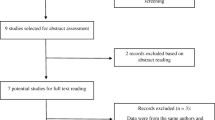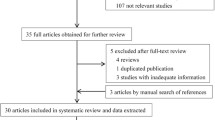Abstract
Backgrounds and aims
The pathogenetic mechanism of Alzheimer’s disease (AD) is still unknown; however, gene polymorphism may play a critical role in the pathogenesis of AD. The aim of this meta-analysis was to evaluate the association between FAS gene A-670G polymorphism and AD.
Methods
We searched all related subjects in PubMed, Embase, Cochrane Library, SinoMed, and the China Knowledge Resource Integrated Database and identified seven studies reporting a relationship between the A-670G polymorphism in the FAS gene and AD.
Results
A total of 1512 cases and 1707 controls were included in the seven studies. The meta-analyses results suggested no significant association between the A-670G polymorphism and AD in any genetic models. When a subgroup analysis was conducted by ethnicity, the A-670G polymorphism was also not relevant to AD. However, when stratified by age, the GG genotype increased the risk of early-onset AD. We also found that the A-670G polymorphism was related to patients with AD who carried the apolipoprotein-E ε4 allele in three genetic models.
Conclusions
To sum up, our data suggested that the FAS gene A-670G polymorphism may not be associated with AD. When a subgroup analysis was conducted by ethnicity, the A-670G polymorphism was also not related with AD in Asian and Caucasian population. However, the FAS-670 GG genotype may increase the risk of AD in the younger population (age, ≤65 years). Furthermore, we found that the A-670G polymorphism was related to patients with AD who carried the APOE4 allele in dominant, allele and homozygous models.






Similar content being viewed by others
Abbreviations
- CI:
-
Confidence interval
- OR:
-
Odds ratio
- AD:
-
Alzheimer’s disease
- APOE4:
-
Apolipoprotein-E ε4
References
Tol J, Roks G, Slooter AJ, van Duijn CM (1999) Genetic and environmental factors in Alzheimer’s disease. Rev Neurol (Paris) 155(Suppl 4):S10–S16
Yoshizawa T, Yamakawa-Kobayashi K, Komatsuzaki Y, Arinami T, Oguni E, Mizusawa H et al (1994) Dose-dependent association of apolipoprotein E allele epsilon 4 with late-onset, sporadic Alzheimer’s disease. Ann Neurol 36:656–659
Roses AD, Saunders AM (1994) APOE is a major susceptibility gene for Alzheimer’s disease. Curr Opin Biotechnol 5:663–667
Daw EW, Payami H, Nemens EJ, Nochlin D, Bird TD, Schellenberg GD et al (2000) The number of trait loci in late-onset Alzheimer disease. Am J Hum Genet 66:196–204
Su JH, Anderson AJ, Cribbs DH, Tu C, Tong L, Kesslack P et al (2003) Fas and Fas ligand are associated with neuritic degeneration in the AD brain and participate in beta-amyloid-induced neuronal death. Neurobiol Dis 12:182–193
Dang TN, Arseneault M, Murthy V, Ramassamy C (2010) Potential role of acrolein in neurodegeneration and in Alzheimer’s disease. Curr Mol Pharmacol 3:66–78
Nakagawa T, Zhu H, Morishima N, Li E, Xu J, Yankner BA et al (2000) Caspase-12 mediates endoplasmic-reticulum-specific apoptosis and cytotoxicity by amyloid-beta. Nature 403:98–103
Su JH, Anderson AJ, Cummings BJ, Cotman CW (1994) Immunohistochemical evidence for apoptosis in Alzheimer’s disease. NeuroReport 5:2529–2533
Richartz E, Noda S, Schott K, Gunthner A, Lewczuk P, Bartels M (2002) Increased serum levels of CD95 in Alzheimer’s disease. Dement Geriatr Cogn Disord 13:178–182
Martinez M, Fernandez-Vivancos E, Frank A, De la Fuente M, Hernanz A (2000) Increased cerebrospinal fluid fas (Apo-1) levels in Alzheimer’s disease. Relationship with IL-6 concentrations. Brain Res 869:216–219
de la Monte SM, Sohn YK, Wands JR (1997) Correlates of p53- and Fas (CD95)-mediated apoptosis in Alzheimer’s disease. J Neurol Sci 152:73–83
Nishimura T, Akiyama H, Yonehara S, Kondo H, Ikeda K, Kato M et al (1995) Fas antigen expression in brains of patients with Alzheimer-type dementia. Brain Res 695:137–145
Andreoli V, Nicoletti G, Romeo N, Condino F, La Russa A, Liguori M et al (2007) Fas antigen and sporadic Alzheimer’s disease in Southern Italy: evaluation of two polymorphisms in the TNFRSF6 gene. Neurochem Res 32:1445–1449
Chiappelli M, Nasi M, Cossarizza A, Porcellini E, Tumini E, Pinti M et al (2006) Polymorphisms of fas gene: relationship with Alzheimer’s disease and cognitive decline. Dement Geriatr Cogn Disord 22:296–300
Feuk L, Prince JA, Breen G, Emahazion T, Carothers A, St Clair D et al (2000) apolipoprotein-E dependent role for the FAS receptor in early onset Alzheimer’s disease: finding of a positive association for a polymorphism in the TNFRSF6 gene. Hum Genet 107:391–396
He XM, Zhang ZX, Zhang JW, Zhou YT, Tang MN, Wu CB et al (2006) The Fas gene A-670G polymorphism is not associated with sporadic Alzheimer disease in a Chinese Han population. Brain Res 1082:192–195
Rosenmann H, Meiner Z, Kahana E, Aladjem Z, Friedman G, Ben-Yehuda A et al (2004) The Fas promoter polymorphism at position -670 is not associated with late-onset sporadic Alzheimer’s disease. Dement Geriatr Cogn Disord 17:143–146
Theuns J, Feuk L, Dermaut B, Del-Favero J, Roks G, Van den Bossche D et al (2001) The TNFRSF6 gene is not implicated in familial early-onset Alzheimer’s disease. Hum Genet 108:552–553
S-l Ma, Tang NLS, Lui VWC, Tam CWC, Lui VWC, Chiu HFK (2006) Lack of association between tumour necrosis factor receptor superfamily gene polymorphisms and the risk of Alzheimer’s disease in a Chinese population. Hong Kong J Psychiatry 16:128–131
Guo J, Jin M, Zhang M, Chen K (2012) A genetic variant in miR-196a2 increased digestive system cancer risks: a meta-analysis of 15 case-control studies. PLoS One 7:e30585
Higgins JP, Thompson SG (2002) Quantifying heterogeneity in a meta-analysis. Stat Med 21:1539–1558
Begg CB, Mazumdar M (1994) Operating characteristics of a rank correlation test for publication bias. Biometrics 50:1088–1101
Egger M, Davey Smith G, Schneider M, Minder C (1997) Bias in meta-analysis detected by a simple, graphical test. BMJ 315:629–634
Kawai M, Kalaria RN, Harik SI, Perry G (1990) The relationship of amyloid plaques to cerebral capillaries in Alzheimer’s disease. Am J Pathol 137:1435–1446
Yu W, Bonnet M, Farso M, Ma K, Chabot JG, Martin E et al (2014) The expression of apoptosis inducing factor (AIF) is associated with aging-related cell death in the cortex but not in the hippocampus in the TgCRND8 mouse model of Alzheimer’s disease. BMC Neurosci 15:73
Louneva N, Cohen JW, Han LY, Talbot K, Wilson RS, Bennett DA et al (2008) Caspase-3 is enriched in postsynaptic densities and increased in Alzheimer’s disease. Am J Pathol 173:1488–1495
Gervais FG, Xu D, Robertson GS, Vaillancourt JP, Zhu Y, Huang J et al (1999) Involvement of caspases in proteolytic cleavage of Alzheimer’s amyloid-beta precursor protein and amyloidogenic A beta peptide formation. Cell 97:395–406
van Duijn CM, de Knijff P, Cruts M, Wehnert A, Havekes LM, Hofman A et al (1994) Apolipoprotein E4 allele in a population-based study of early-onset Alzheimer’s disease. Nat Genet 7:74–78
Conflict of interest
The authors declare no conflict of interest.
Ethical approval
The article does not contain any studies with human participants performed by any of the authors.
Author information
Authors and Affiliations
Corresponding authors
Additional information
Jinlong Zhu and Jianhua Su contributed equally to this study.
Rights and permissions
About this article
Cite this article
Zhu, J., Su, J., Liu, R. et al. Relationship between the FAS gene A-670G polymorphism and Alzheimer’s disease: a meta-analysis. Aging Clin Exp Res 27, 563–571 (2015). https://doi.org/10.1007/s40520-015-0351-2
Received:
Accepted:
Published:
Issue Date:
DOI: https://doi.org/10.1007/s40520-015-0351-2




